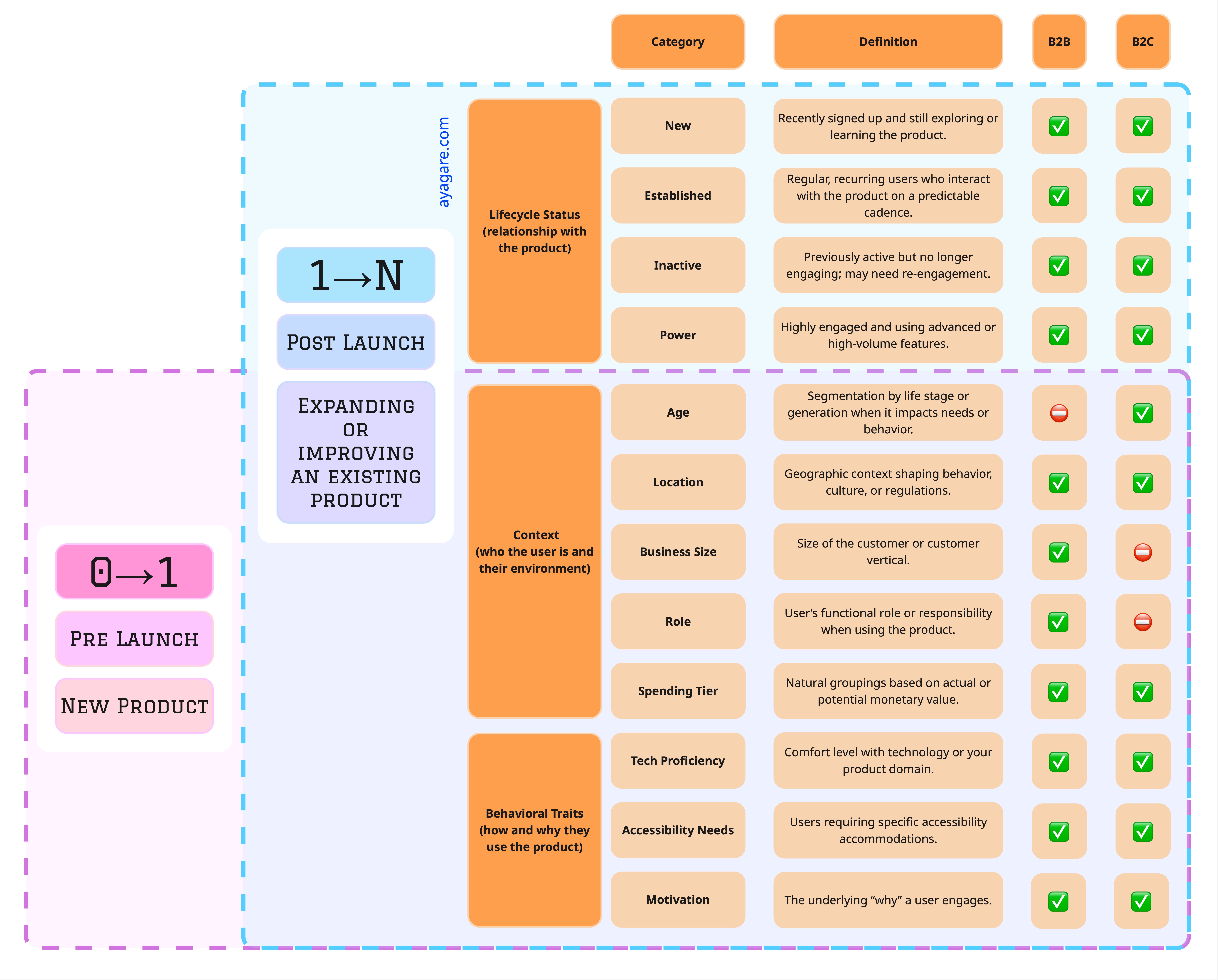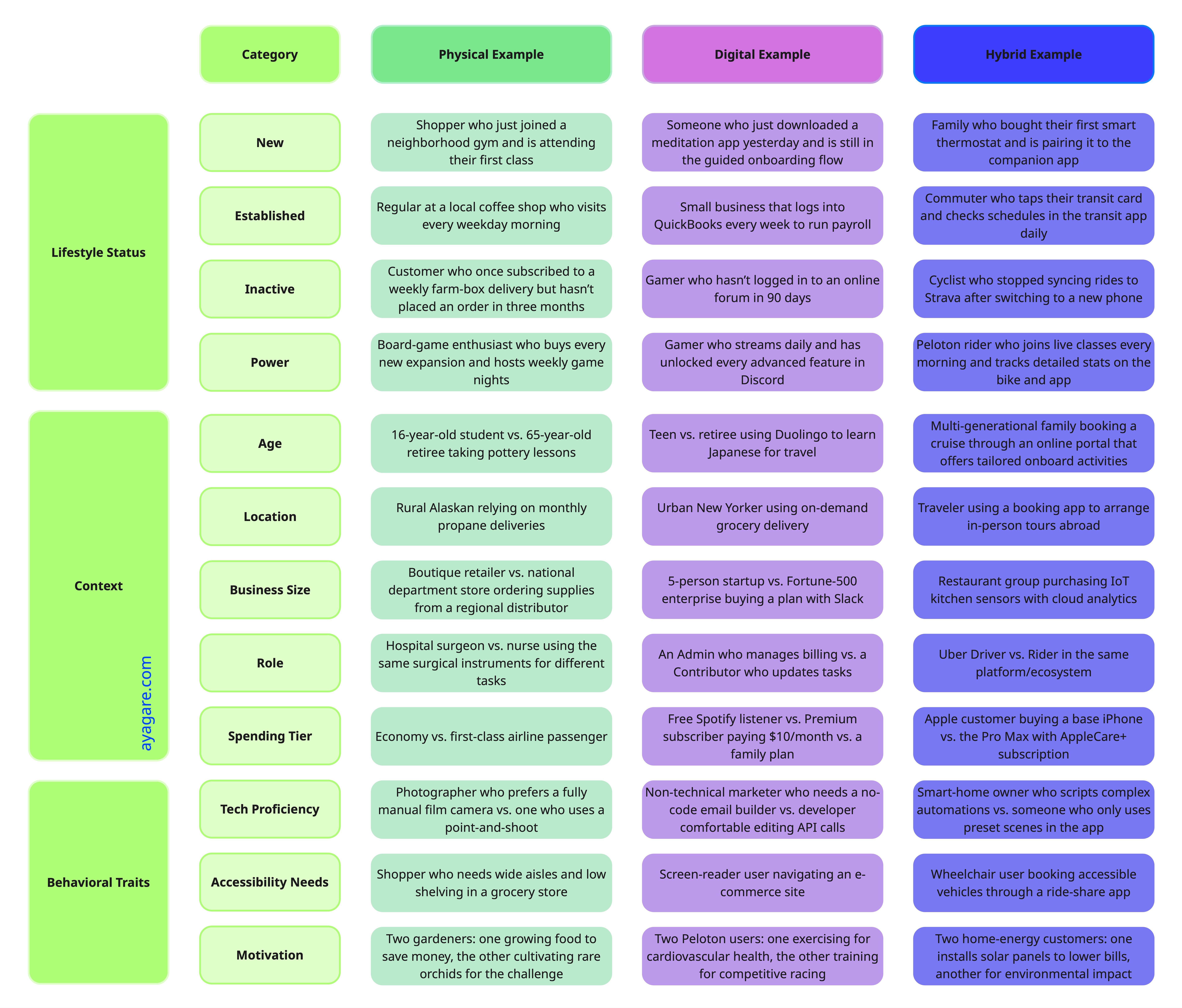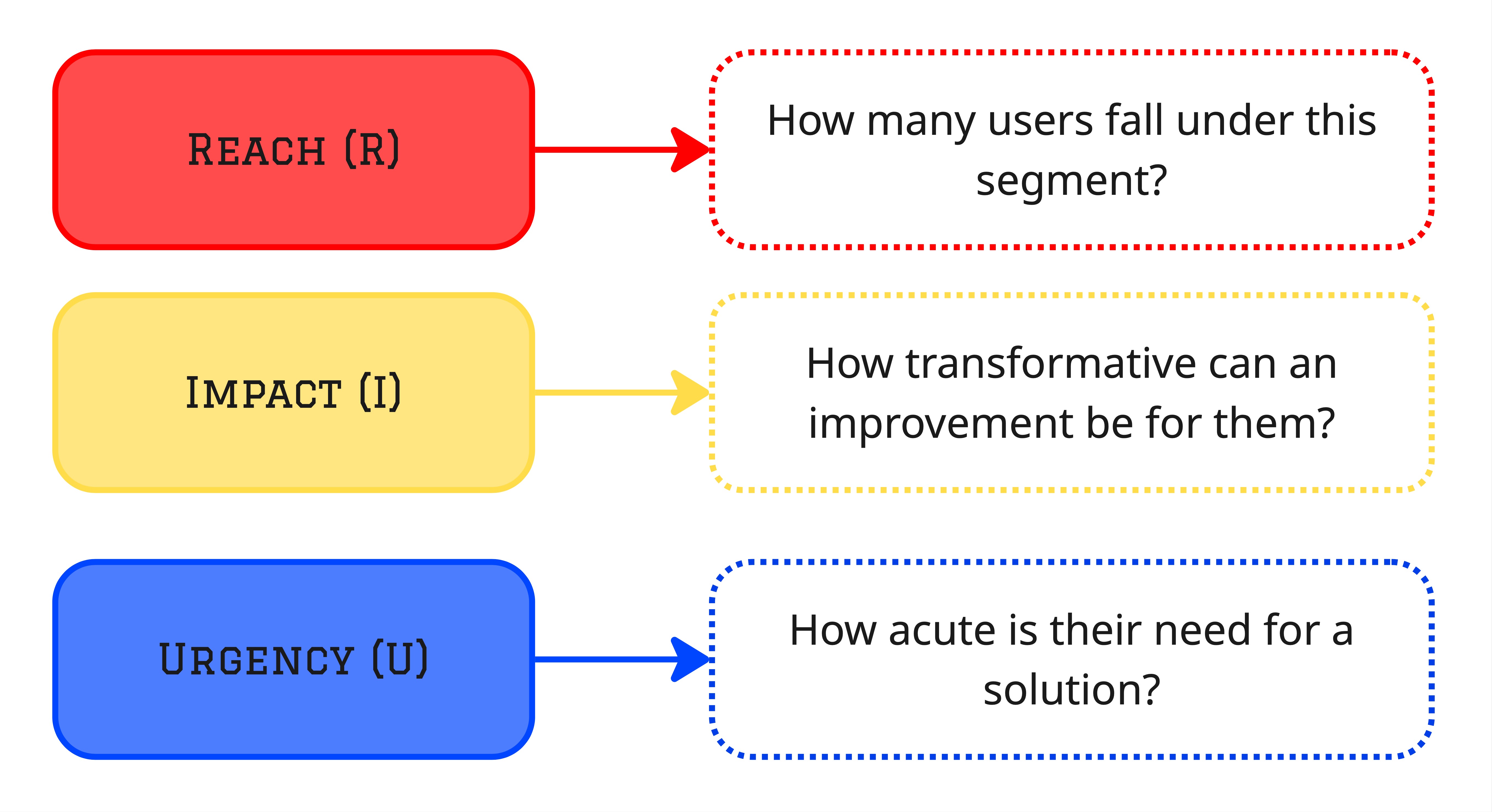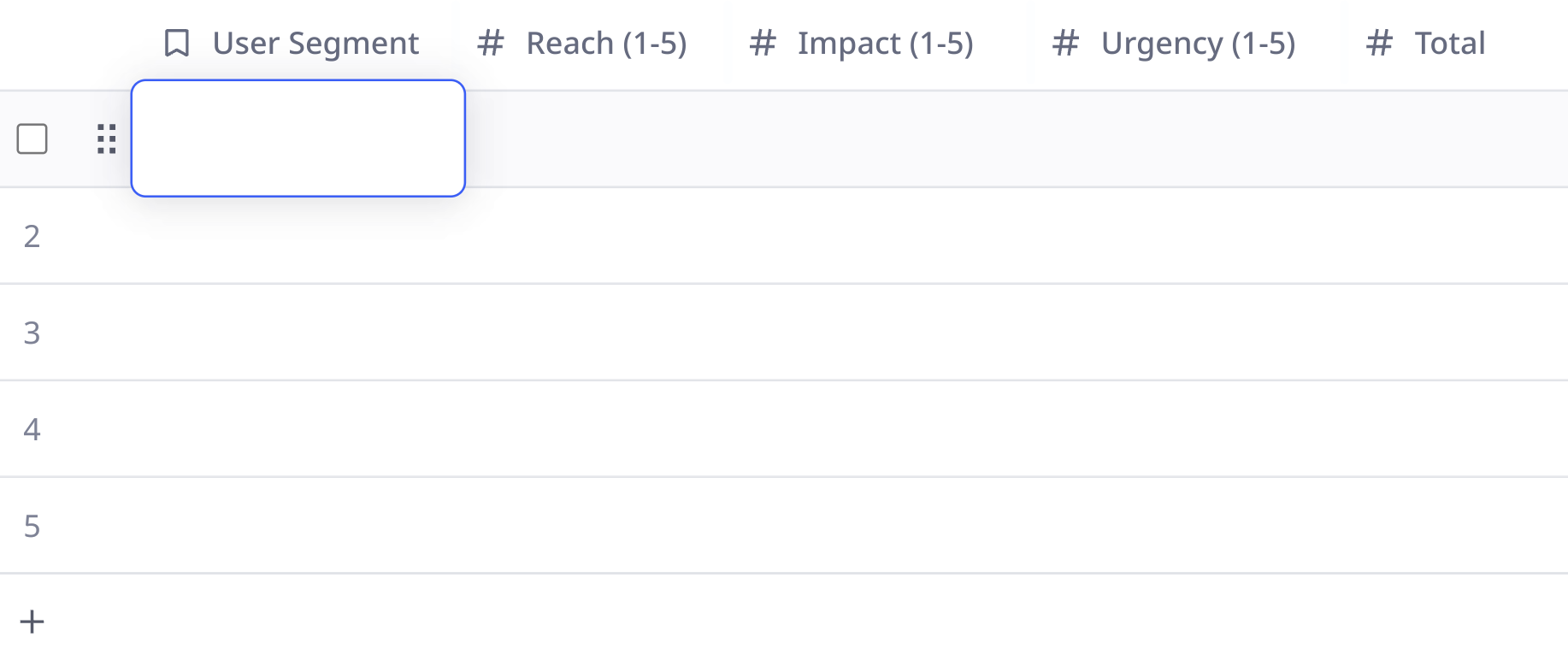🧩 User Segments
TL;DR Outcome
What:
Investigate and define user segments tailored to your product type (0→1 or 1→N, software, hardware, or hybrid) and market (B2B or B2C).
How:
Score each segment by Reach × Impact × Urgency.
Why:
Guide product design, prioritization, and messaging, and revisit as your product and market evolve.
Definition
- A distinct group of users who share meaningful characteristics such as context, behaviors, or needs so products, features, or messaging can be tailored to them.
Why Segments Matter
Breaking users into meaningful groups lets you:
- Empathize with distinct needs and behaviors.
- Discover underserved audiences.
- Prioritize roadmap investments based on impact.
Segment Categories & Examples
Let’s cover the most common, high-leverage dimensions that product teams typically consider when segmenting users. Think of them as a starting toolkit, or a menu of proven lenses you can mix and match depending on your product. Treat them as a solid foundation you adapt to your specific product and audience.


Segment Scoring Framework
Evaluate each segment on the following 3 dimensions:

Quick-Reference Scoring Table
Use this ready-to-fill table during workshops or planning session:
Google Sheet: User Segment Scoring Template
(This may not properly render on mobile without the Google Sheets app)
It will look something like this:

Rate each dimension 1–5, then add or multiply to find a total score. Higher scores indicate higher priority for design, research, and feature investment.
Next Steps
- Brainstorm potential segments (persona workshops, analytics clustering, interviews).
- Fill out the table above.
- Sort by total score and validate top candidates with qualitative research.
Tip: Revisit your segmentation quarterly or when market conditions change because user segments evolve as your product and users grow.